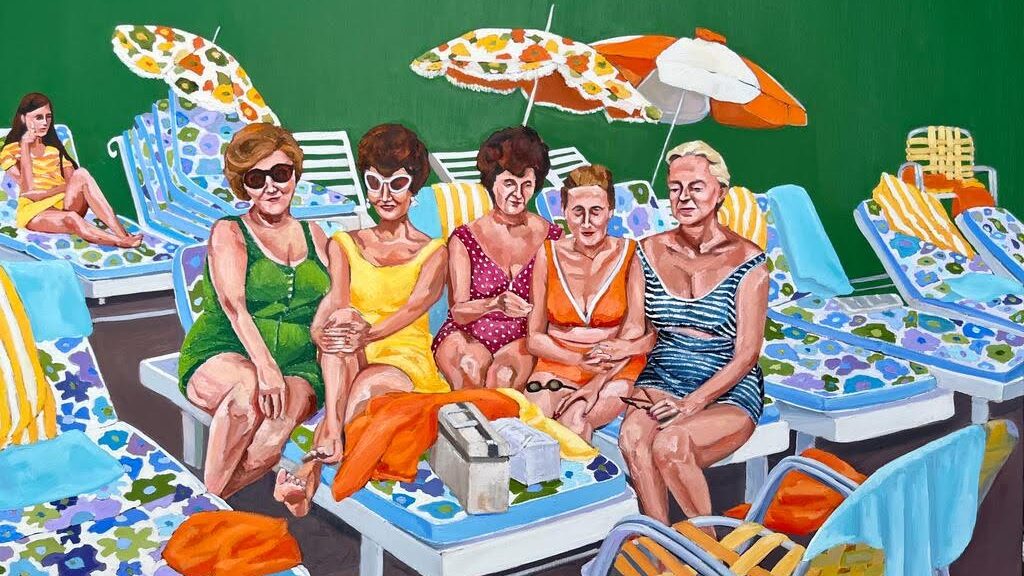Art in the Aftermath: The Jerusalem Spring Biennale Celebrates Contemporary Jewish Culture in Post-Oct. 7 Reflection
The Jerusalem Spring Biennale, postponed due to war, returns Mar 10-Apr 29, highlighting women's empowerment and leadership through various pieces of modern art
The Jerusalem Spring Biennale—a preeminent global platform for the exhibition of contemporary Jewish art—will showcase over thirty exhibitions at various venues between March 10th and April 29th, 2024, after being postponed due to the onset of the war with Hamas. The Media Line had the privilege of attending the event in the company of the exhibition’s creative director and curators.
Our journey started at the Jewish Museum of Italian Art, nestled in a picturesque green area, where the museum walls offered a refreshing coolness. The exhibition was already captivating, but the works of the artists participating in The Jerusalem Spring Biennale transformed the museum, adding new colors and meanings that will inspire visitors.
Founder and Creative Director of The Jerusalem Biennale Ram Ozeri told The Media Line about the preparations. He shared that the exhibition initially had an opening day in early Nov. 2023. However, despite extensive preparations, including arrangements for shipping artworks from abroad, organizers faced a dilemma when the war broke out on Oct. 7.
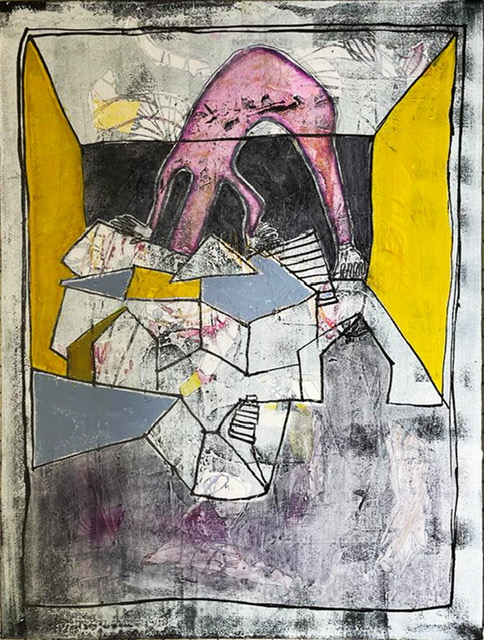
A work by Gal Cohen, from the ‘Home Sick Home’ series, 2023. (Courtesy)
Realizing the scale of the war, they decided to postpone the event, which Ozeri said was difficult for everyone. “All of the projects we are presenting, with no exception, were adjusted between November and now. Some exhibitions changed completely, others only slightly,” he explained.
“I think the main thing that changed was our interpretation of the works. One of the things that happened to me is that I looked at some of the exhibitions, and I saw completely different things than what I saw before the war.”
The 6th Biennale’s theme is “Iron Flock,” a translation of a modern Hebrew phrase describing an object of great cultural-historical importance. According to the Biennale website, the theme allows “for the exploration of the foundations of contemporary culture and to identify, through the eyes of curators and artists from all over the world, the movements, ideas, people, and moments that have become our unsaleable cultural assets.” Additionally, it notes that it also gives “voice to serious recognition of Jewish and Israeli women artists.”
In that vein, Ozeri told The Media Line that the exhibition’s many new meanings are specifically connected to women’s power and strength, their way of adjusting to things, and their ability to overcome challenges. “I see a lot of great art that carries a message, so I suddenly see things I never saw in previous Biennales—a big message about leadership and how important it is to have great leadership,” he added.
The Nahon Museum of Italian Jewish Art’s acting director, Daniel Niv, also shared his insights about the Jerusalem Spring Biennale with The Media Line. He said working with the artists was a “privilege,” adding, “All of them are brilliant.”
Niv and his team are working to shape museums’ futures. According to him, the Biennale is a natural continuation of their work because it allows them to present modern and contemporary art. “We wish to do it in the next few years,” he said. “We want to make those connections between our beautiful, unique collection and the present and what is relevant.”
Give the gift of hope
We practice what we preach:
accurate, fearless journalism. But we can't do it alone.
- On the ground in Gaza, Syria, Israel, Egypt, Pakistan, and more
- Our program trained more than 100 journalists
- Calling out fake news and reporting real facts
- On the ground in Gaza, Syria, Israel, Egypt, Pakistan, and more
- Our program trained more than 100 journalists
- Calling out fake news and reporting real facts
Join us.
Support The Media Line. Save democracy.
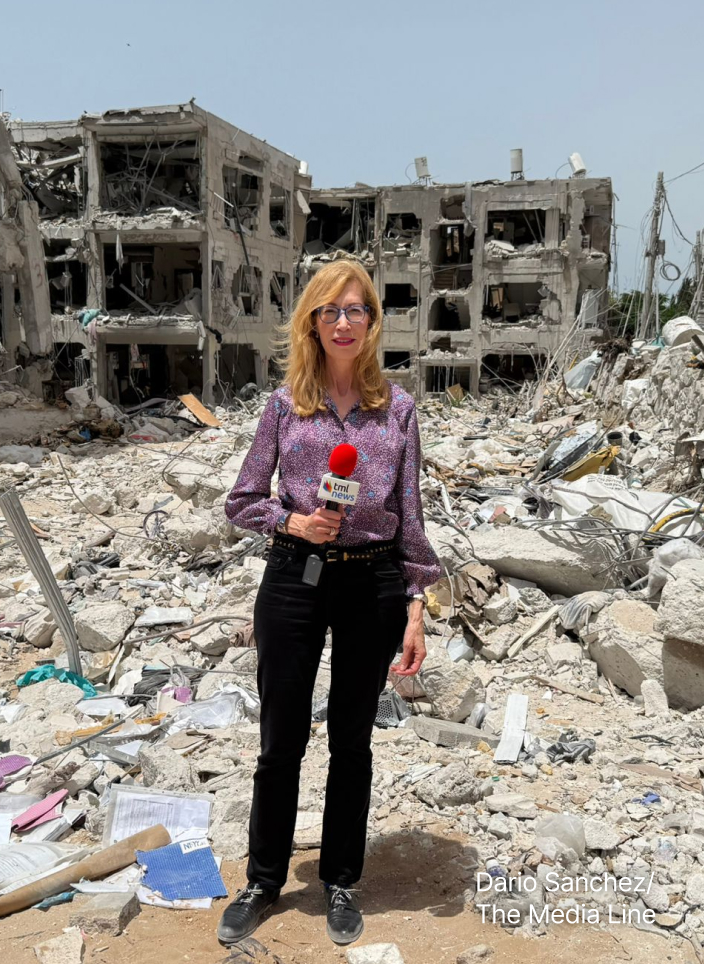
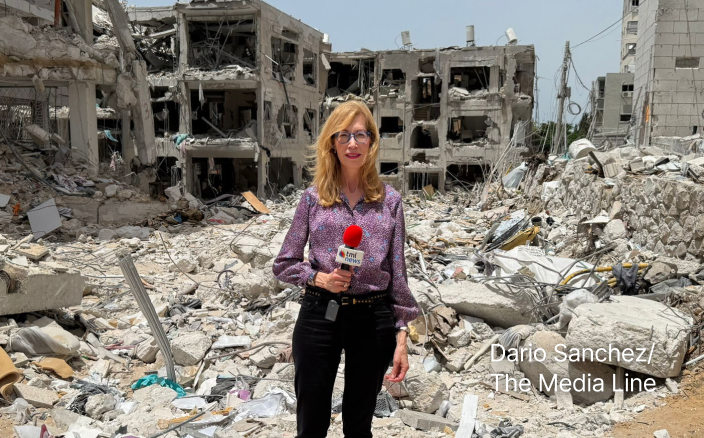
“And with this exhibition, we hope to achieve it.” He added that the museum’s participation in the Jerusalem Spring Biennale was an experiment. “Regardless of the amount of people coming and the exposure, this experiment works. We now know that this is the right direction.”
Niv also discussed the museum’s plans to open an art residency on the new floor and expressed optimism about the Biennale’s potential impact on attracting new audiences, particularly young people and art enthusiasts who may have reservations about Jewish art. He said he aims to challenge the misconception that Jewish art needs to be more exciting and hopes to demonstrate through the Biennale that this notion needs to be corrected.
“We do hope that many new audiences will come because of the Biennale, especially young people and especially art lovers, who, I sense, have some apprehensions regarding Jewish art, as if it’s not interesting enough,” he told The Media Line. “But we want to prove them otherwise.”
Meanwhile, Emily D. Bilski, curator of the “Threading” exhibition in the Nahon Museum of Italian Jewish Art—one of the Biennale’s venues—shared her impressions of some of the works during a tour and gave her insights on this year’s concept. She noted that it originated in the Talmud: “It refers to those things which a woman brings into her marriage, which remain hers regardless of the fate of the marriage. I think this theme was challenging for a lot of artists.”
Bilski spoke about one of the exhibition’s most impressive works—a wedding dress made from the names of women who influenced Jewish culture. She explained that the exhibition that she curated, “Threading,” originated with an idea of one of the artists, Andi Arnovitz, who connected that idea about inalienable cultural assets with a custom in many Jewish communities whereby women would transform their wedding garments into liturgical textiles for the synagogue.
“This artist works extensively in textiles and paper. She created her work from her wedding dress and called it ‘What We Bring.’ She took 2,611 names of Jewish women from Eve up until Gal Gadot, who has contributed to culture,” she explained.
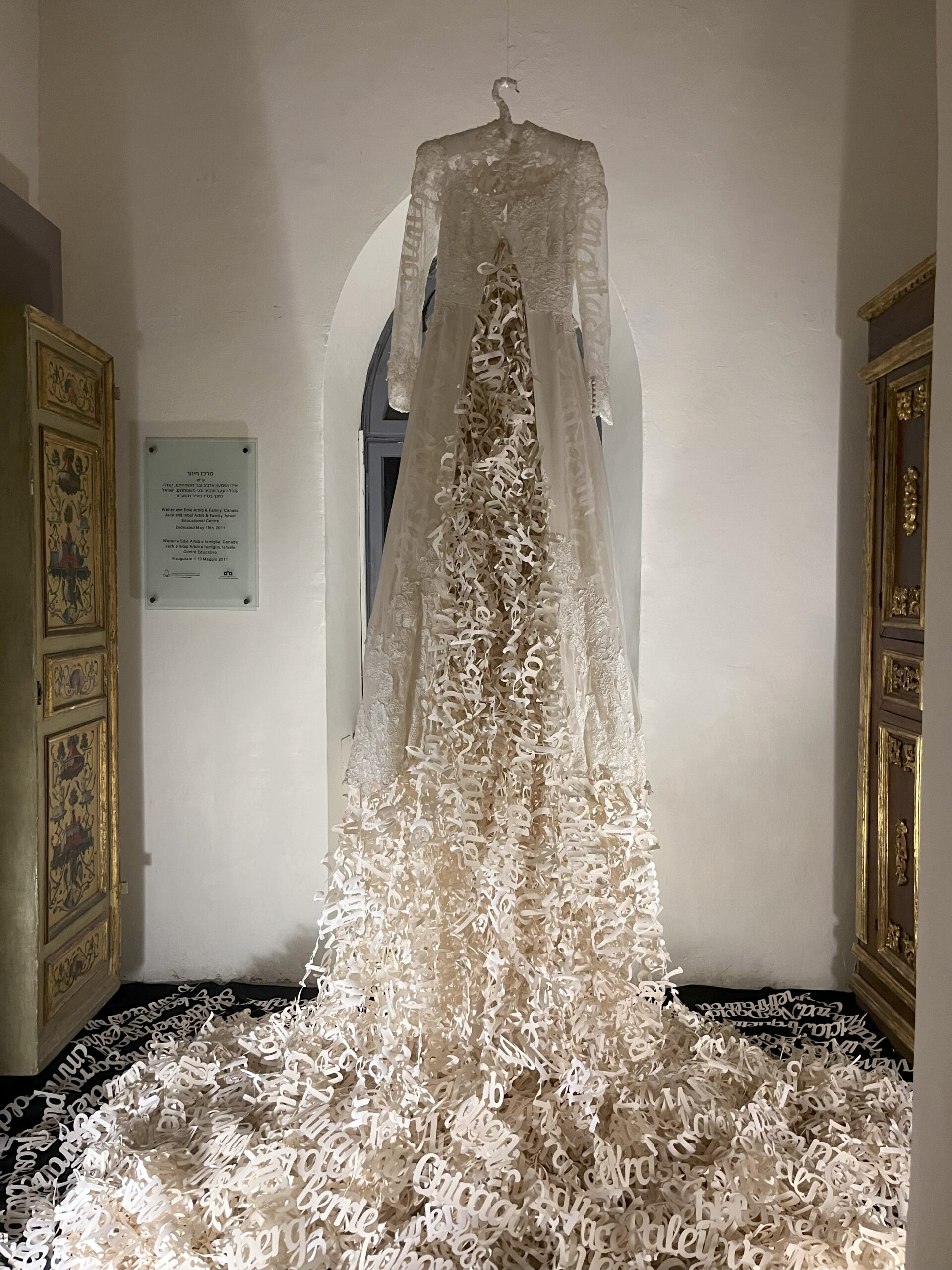
Andi Arnovitz’s work ‘What We Bring.’ (Courtesy)
Notably, “Threading” is the first Israeli exhibition to include work by American video art pioneer Beryl Korot, who drew inspiration from Etty Hillesum, a Dutch Jewish woman who chronicled her life during World War II before being sent from the Westerbork transit camp to Auschwitz.
Korot used video to merge elements of Hillesum’s story, crafting a background from woven strips that depicts stormy weather, swaying trees, and rain. Overlaying this scene, words from Hillesum’s diary gently fall, illustrating her reflections and the grim reality of receiving her deportation orders.
“If you follow the narrative here, it tells the story about this woman’s philosophical musings and how she thinks about her role in relationship to the community,” Bilski explained.
Bilski also presented a print and textile series of works that reflected the Biennale theme and reflected women’s strength. She noted that some works are connected to the Torah.
For instance, the artist Hedy Abramovitz took a vintage linen fabric that had belonged to her grandmother in Austria. The family took it with them when they fled the Nazis in the 30s and settled in New York, and then, when Abramovitz immigrated to Israel, she brought it with her. The artist decided to embroider the handprints and names of her family members, and they then used it as a hand-washing towel on the Seder night for a Passover hand.
The exhibition was explored at the Jewish Heritage Center. There are four exhibitions: Jews on Paper, A Palace in Time: Contemporary Religious Buildings Facing Jewish History, Hallelujah, and Tzimtzum. We reached the spacious and brightly lit area adorned with colorful posters depicting various elements of Jewish culture, holidays, and traditions.
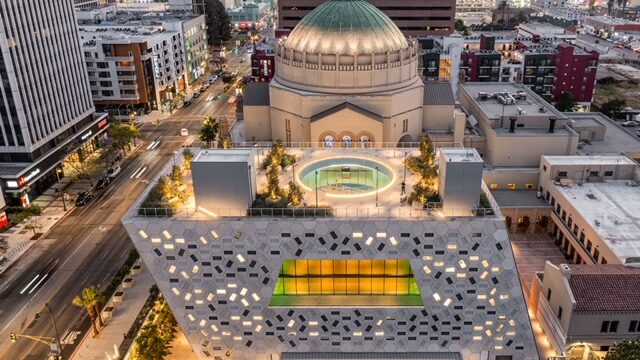
“A Palace in Time,” OMA New York and Shohei Shigematsu, Audrey Irmas Pavilion, 2022. (OMA New York/Jason O’Rear)
“The Biennale doesn’t tend to have a design,” Eli Kaplan-Wildman, the exhibition’s co-curator and creative director, explained to The Media Line.“This is a big first for coming from both directions: for the Biennale to include something that’s considered design and for many of these artists to be included in something that’s like.”
“I think it’s super important to show that Judaism has a fresh, colorful, interesting, and intricate side,” Kaplan-Wildman said. “This part of the exhibition is colorful and happy. We decided to do it because these artists are, each of them in their own circles, dealing with the war, whether it’s antisemitism in their workplace, online, or in Israel. This is a chance to appreciate them for that effort.”
Ozeri explained that even when circumstances change, the core of things always stays the same.
“When the Israeli audience comes in, they will see and maybe identify with those things. Through international artists, they will also get a notion of what people who moved away from here are keeping with them from Israel”, he says.
He also shared with The Media Line that the opening events used to be much more festive, cheerful, and entertaining. “The opening events we had this year were more meaningful and quiet. People were very moved and happy for the opportunity to gather around art.”
Ozeri added that art has a healing function and creates unity. He noted, “I think one of the things that makes the Biennale very unique is that we bring very different kinds of people together around art, and it really helps.”
